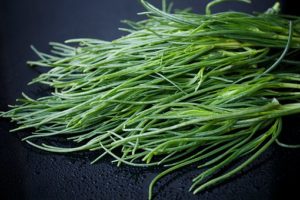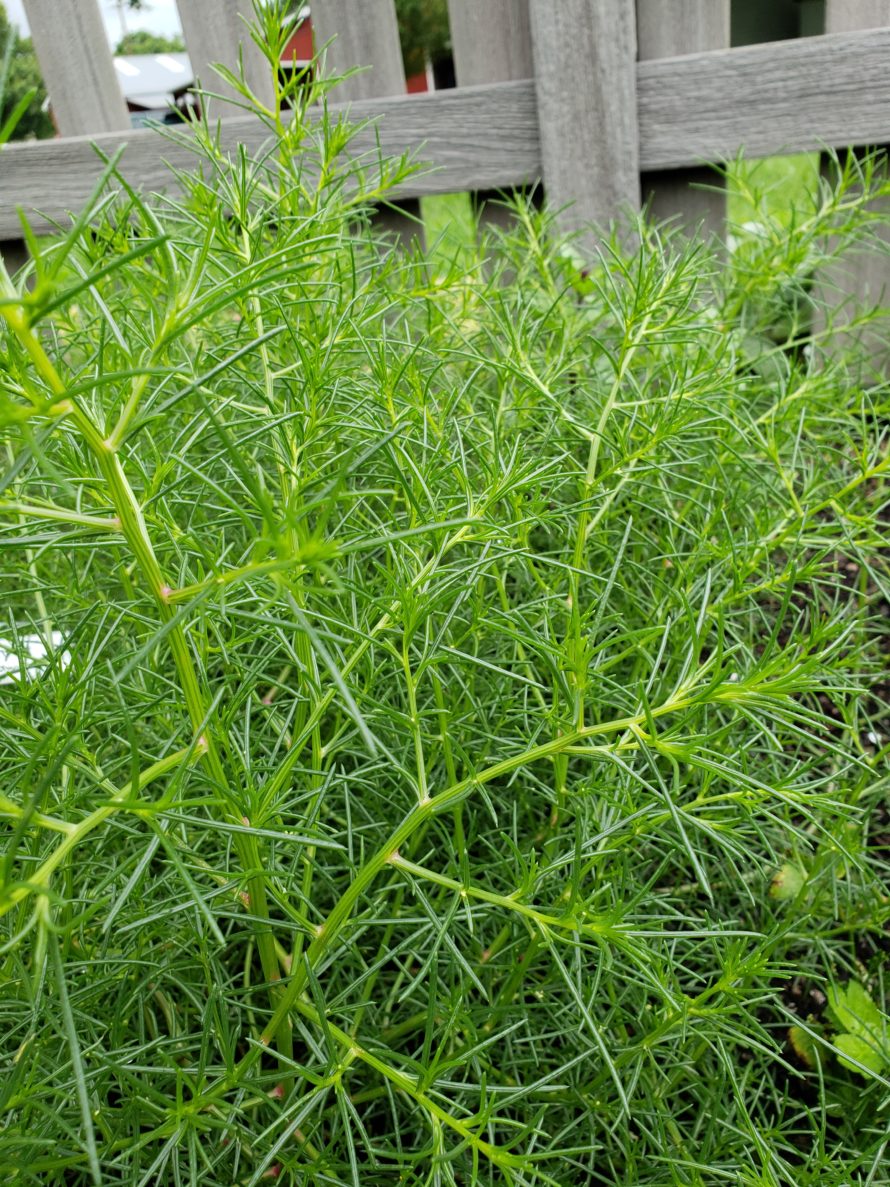 Saltwort (Salsola komarovii) is an annual herb that is native to China, Japan, Korea and eastern Russia. It is most closely associated with Japan where it grows in salt marshes and is known as “okahijiki” or land seedweed. The leaves are used in salads, in sushi and as a side dish. They can be blanched, steamed or sautéed.
Saltwort (Salsola komarovii) is an annual herb that is native to China, Japan, Korea and eastern Russia. It is most closely associated with Japan where it grows in salt marshes and is known as “okahijiki” or land seedweed. The leaves are used in salads, in sushi and as a side dish. They can be blanched, steamed or sautéed.
The Japanese have long used the juice of the plant medicinally as a diuretic. The plant is also a good source of Vitamin A and other minerals such as iron, potassium and calcium.
Saltwort is native to salt marshes, but will grow equally well in the non-salty soils found in our gardens. It prefers full sun but will tolerate some shade. The plants grow between 8 and 18 inches tall depending on how much sunlight they receive.
It’s easy to grow saltwort from seed. It will even readily self-seed in your garden. Or you can direct sow the seeds in your garden during the spring or early summer. Sow the seeds ⅛ to ¼ inch deep in rows that are 12 to 18 inches apart. Germination should occur in one to two weeks. There is no need to thin your seedlings. The plants will grow well even if crowded.
If you prefer to start your seeds indoors, plant them ⅛ to ¼ inches deep two to three weeks before your last frost. They should germinate in 1 to 2 weeks. Transplant your seedlings outdoors after your last frost when they are 3 to 4 inches tall. Space your seedlings 4 to 6 inches apart in rows that are 18 inches apart.
Leaves are best harvested when young. The older leaves can be tough. The plants can also be grown as micro-greens. Freshly harvested, unwashed saltwort leaves can be stored in the refrigerator for up to a week.

